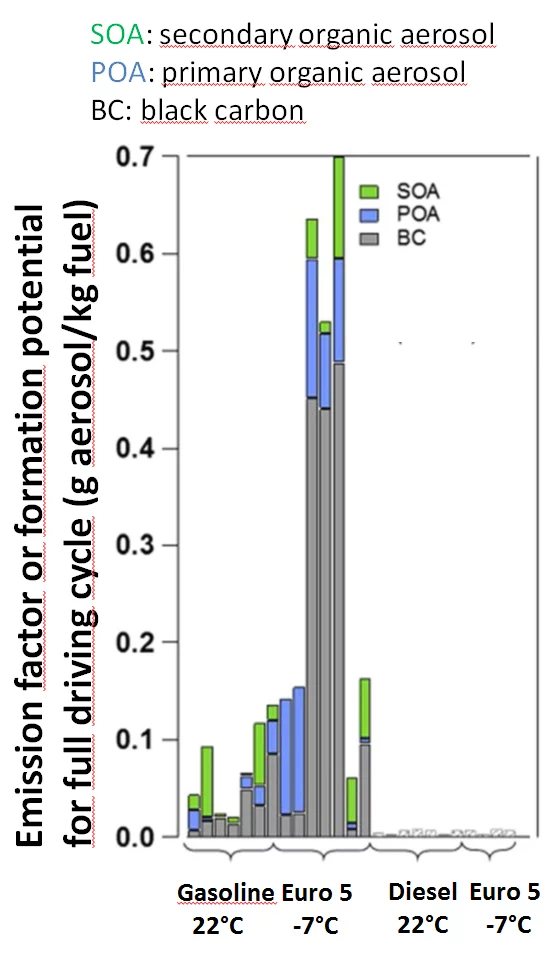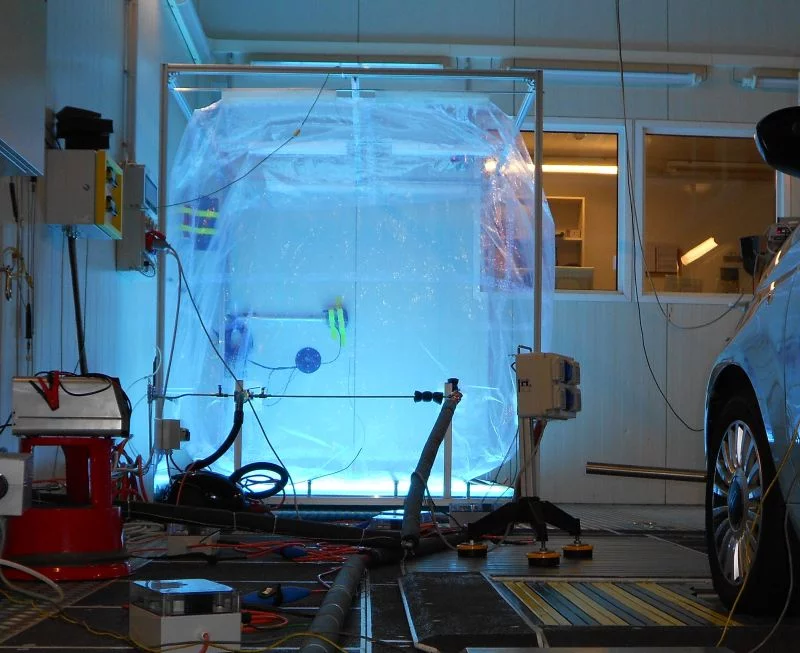Published on July 13 in Scientific Reports: http://nature.com/articles/doi:10.1038/s41598-017-03714-9
Background
- Research led by the Laboratory of Atmospheric Chemistry at the Paul Scherrer Institute (PSI), Switzerland as a result of a collaboration agreement between the Swiss Federal Office for the Environment and the European Comission - Joint Research Centre in Ispra, Italy (JRC) with the participation of the Aix Marseille University, France; NOAA Earth System Research Laboratory, Boulder, US; CIRES, University of Colorado, Boulder, US; University of Montreal, Canada; Carnegie Mellon University, Pittsburgh, US.
- The research started with an experimental campaign hosted by the JRC Vehicle Emissions Laboratories for the study of the emissions and their aging in the PSI smogchambers of Euro 5 gasoline and Euro 5 diesel vehicles on dynamometers. A model was developed to estimate SOA formation and the results were put into perspective to ambient data and vehicle fleet.
- The following results should be viewed as a contrast to nitrogen oxides (NOx): Diesel cars emit much more than gasoline cars (even more in real-world than found during the homologation tests according to recent scandals).
Results
- Modern gasoline cars emit much more carcinogenic primary soot (BC: black carbon + POA: primary organic aerosol) and volatile organic compounds (VOC) that also form far more toxic secondary organic aerosol (SOA) than modern diesel cars.
- Especially at low temperatures (winter / high latitudes) the emissions of gasoline cars are extraordinarily high. VOC emissions of gasoline cars are higher than the diesel car emissions only for the first minutes after the vehicle is started.
- Our measurements and model indicate that downwind of Los Angeles gasoline cars emissions lead to more secondary organic aerosol than diesel cars.
- Primary aerosol emissions will continue for years to be dominated by diesel vehicles in the presence of old diesels on the road, especially in Europe where diesel passenger cars are common.
Implications
- New gasoline cars are better than diesel cars concerning NOx emissions, but concerning the toxic and carcinogenic carbonaceous emissions modern diesel cars are favorable.
- Possible measures to reduce gasoline car emissions suggested by the Laboratory of Atmospheric Chemistry at PSI:
- Implementation of particle filters to get rid of soot
- Reduction of VOC emissions during cold start
e.g. reduction of the time until the catalyst reaches the necessary temperature e.g. by pre-heating the catalyst
Contact
Dr. André S. H. PrévôtGroup Leader, Gasphase and Aerosol Chemistry Group, OFLA/004
Paul Scherrer Institut
Telephone: +41 56 310 4202
E-mail: andre.prevot@psi.ch
Original Publication
Gasoline cars produce more carbonaceous particulate matter than modern filter-equipped diesel carsS. M. Platt, I. El Haddad, S. M. Pieber, A. A. Zardini, R. Suarez-Bertoa, M. Clairotte, K. R. Daellenbach, R.-J. Huang, J. G. Slowik, S. Hellebust, B. Temime-Roussel, N. Marchand, J. de Gouw, J. L. Jimenez, P. L. Hayes, A. L. Robinson, U. Baltensperger, C. Astorga, A. S. H. Prévôt
Scientific Reports, 2017-07-13
DOI: 10.1038/s41598-017-03714-9



